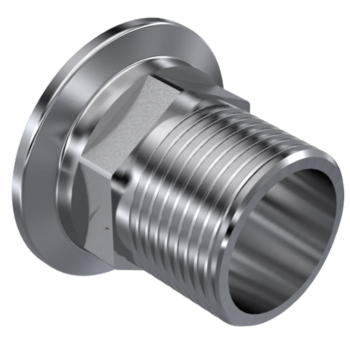Lap Joint Flanges Suppliers
LJFF Flange Manufacturers
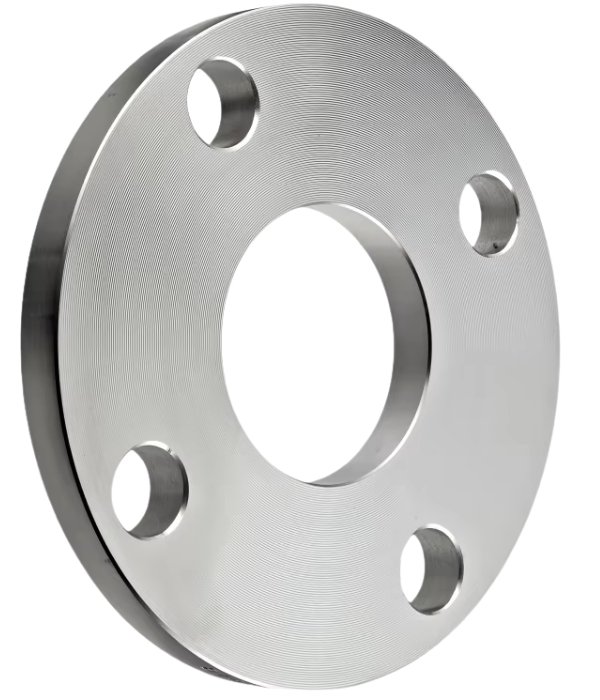
ASME B16.5 Lap Joint Flanges: Dimensions | Specifications | Material Grade | Standards | About Loose Flange | All Product Types
Lap Joint Flanges (LJRF / LJFF) are unique pipe flanges designed to be used in combination with a Stub End (Butt-Welded). The flange itself does not make direct contact with the fluid inside the pipeline, which allows it to be made from a lower-grade material, while the stub end—welded to the pipe—is selected for corrosion resistance. The Lap Joint design allows the flange to rotate freely around the pipe, making it ideal for applications where precise bolt hole alignment is required after welding. This makes them especially valuable in systems that require frequent dismantling or inspection, such as food processing, water treatment, chemical plants, oil refineries, and offshore platforms.
At Nutech Overseas, we manufacture and export Lap Joint Pipe Flanges as per ASME B16.5, ANSI B16.5, ASME B16.47 Series A/B, and EN 1092-1 standards, covering sizes from ½″ NB to 24″ NB in pressure classes ranging from Class 150 to Class 1500 (PN6 to PN250). The available face types include LJRF (Lap Joint Raised Face) and LJFF (Lap Joint Flat Face). These flanges are typically supplied with smooth or serrated finishes and are compatible with full-face or ring-type gaskets, depending on the face design. Lap Joint Flanges are preferred for non-critical, low-pressure piping systems, especially when the fluid is aggressive or requires high corrosion resistance.
We offer Lap Joint Flanges in a wide range of materials including Stainless Steel (304/304L, 316/316L, 321), Carbon Steel (ASTM A105, A350 LF2), Alloy Steel (F11, F22), Duplex Steel (UNS S31803), Super Duplex (UNS S32750 / S32760), Inconel (600, 625), Hastelloy, Monel, Titanium, and Copper Nickel. With in-house machining and testing, we ensure dimensional accuracy, proper stub end compatibility, and consistent quality. All flanges are supplied with necessary documentation like EN 10204 3.1/3.2, NACE compliance, and PED certification, upon request.
Lap Joint Flanges are especially useful in piping systems where frequent disassembly and reassembly is required for cleaning, inspection, or maintenance. Since the flange is not permanently welded, it reduces labor costs and simplifies alignment during installation—making it a preferred choice in modular piping layouts and large-diameter piping systems. Another key benefit is that these flanges can be reused with different stub ends, offering cost-efficiency over time. While Lap Joint Flanges are generally used for low-pressure, non-critical services, they can also be applied in high-corrosion environments when paired with compatible corrosion-resistant stub ends. Engineers often choose them in marine systems, desalination plants, and chemical handling pipelines where system flexibility and corrosion resistance are critical.
Lap Joint Flanges (Loose Flange) Manufacturer in Stainless Steel, Carbon Steel, Alloy Steel – ASME B16.5 / B16.47, EN 1092-1 & DIN Standards
For complete technical details, including dimensions, pressure rating classes, weight charts, sizes, tolerances, and material specifications of our ANSI B16.5 Lap Joint Flanges, please download the full Catalog PDF below.
Loose Type LJRF / LJFF Lap Joint Pipe Flanges with Stub Ends – Available in Class 150 to 1500 – Sizes ½″ to 24″ – For Corrosion-Resistant & Misalignment-Prone Piping Systems
Technical Specifications of Lap Joint Flanges
| Specification | Details |
|---|---|
| Type | Lap Joint Flange (LJ), Loose Flange with Stub End, LJRF (Raised Face), LJFF (Flat Face), Slip-over style |
| Design Standard | ASME B16.5, ANSI B16.5, ASME B16.47 Series A & B, MSS-SP-44, EN 1092-1 Type 02, DIN 2641 / 2642 |
| Size Range | ½″ NB to 24″ NB (DN15 to DN600) |
| Pressure Ratings | Class 150, 300, 600, 900, 1500 (PN6 to PN100) |
| Face Type | Raised Face (LJRF), Flat Face (LJFF) |
| Flange Thickness | As per ASME / EN / DIN standards and pressure class |
| Stub End Compatibility | Designed to be used with Short or Long Stub Ends – ASME B16.9 or Custom Fabricated |
| Welding Type | Stub end is butt-welded to pipe; flange is loose and slips over stub end |
| Surface Finish | Smooth face finish (125–250 AARH), stock finish, machined flat or custom based on sealing requirements |
| Gasket Compatibility | Compatible with flat ring gaskets, spiral wound gaskets with flat metal-facing surfaces |
| Drilling Template | Conforms to ANSI B16.5, EN 1092-1, or custom as per application |
| Corrosion Resistance | Excellent when used with a corrosion-resistant stub end (e.g., SS stub end with CS flange) |
| Testing & Inspection | PMI, Hydrostatic Test, NDT (Ultrasonic / Magnetic Particle), Dimensional Inspection, Visual Inspection |
| Certification | EN 10204 Type 3.1 / 3.2, IBR Approval, ISO 9001, PED 2014/68/EU, NACE MR0175 / ISO 15156, ISO 9001 |
| Application Industries | Ideal for piping systems requiring frequent dismantling, low-pressure applications, non-critical systems, shipbuilding, water treatment plants |
| Origin | Made in India (by Nutech Overseas) |
| Export Network | USA, Europe, and Middle East |
Complete Material Grade Chart - Class 150 Loose Flange
| Material Category | Loose Flange Grades |
|---|---|
| Stainless Steel Lap Joint Flange | ASTM A182 F304 / F304L / F304H, F316 / F316L / F316Ti, F310, F309S, F317 / F317L, F321 / F321H, F347 / F347H, F904L, ASTM A351 CF3 / CF3M / CF8 / CF8M / CF8C, DIN 1.4301, 1.4306, 1.4307, 1.4311, 1.4401, 1.4404, 1.4408, 1.4409, 1.4541, 1.4571, 1.4550, 1.4435, 1.4539 |
| Duplex Steel Lap Joint Flange | ASTM A182 F51 / F52 / F53 / F54 / F55 / F57 / F59 / F60 / F61, UNS S31803 / S32205 |
| Super Duplex Steel Lap Joint Flange | ASTM A182 F53 / F55 / F57 / F59 / F60 / F61, UNS S32750 / S32760 |
| Carbon Steel Lap Joint Flange | ASTM A105 / A105N, ASTM A350 LF2, ASTM A694 F52 / F56 / F60 / F65 / F70 / F80, ASTM A216 WCB, DIN 1.0460 / 1.0402 / 1.0619, Die Steel, Mild Steel |
| Alloy Steel Lap Joint Flange | ASTM A182 F5 / F9 / F11 / F12 / F22 / F91, AISI 4130 / 4140 |
| Nickel Alloy Lap Joint Flange | Nickel 200 / 201, ASTM B564 |
| Monel Lap Joint Flange | Monel 400 (UNS N04400), Monel K500 (UNS N05500), ASTM B564 |
| Inconel Lap Joint Flange | Inconel 600 / 601 / 625 / 690 / 718 / 783 / X750, ASTM B564 |
| Incoloy Lap Joint Flange | Incoloy 800 / 800H / 800HT (UNS N08800), Incoloy 825 (UNS N08825), Incoloy 925, ASTM B564 |
| Hastelloy Lap Joint Flange | Hastelloy C276 (UNS N10276), C22 (UNS N06022), C4, C2000, B2, B3, X, ASTM B564 |
| Alloy 20 Lap Joint Flange | Alloy 20 / 20Cb-3, Carpenter® 20, ASTM B462 |
| 254 SMO Lap Joint Flange | SMO 254 / 6Mo, UNS S31254, DIN 1.4547, ASTM A182 |
| Copper Nickel Lap Joint Flange | Copper Nickel 90/10 (C70600), 70/30 (C71500), UNS C71640, ASTM B61 / B62 / B151 / B152 |
| Copper Lap Joint Flange | TP1, TP2, T1, T2, C10100–C12300, C14200–C17200, C21000–C71520, including C10930, C11000, C11400, C12000, C12200, C26000, C28000, C33000, C44300, C70600, etc. |
| Brass Lap Joint Flange | Grades 3602, 2604, H59, H62, etc. |
| Aluminium Lap Joint Flange | Aluminium Grades 5052, 6061, 6063, 2017, 7075, etc. |
| Titanium Lap Joint Flange | ASTM B381 Gr.1 / Gr.2 / Gr.4 / Gr.5 / Gr.7, UNS R50250 / R50400 / R50550 / R50700 / R52400 / R53400 / R56320 / R56400 |
| Other Special Grades | Al6XN, Tin Bronze, Aluminium Bronze, Lead Bronze, Nimonic 75 / 80A / 90 |
International Flange Standards We Manufacture & Supply
Lap Joint Flanges (also known as Loose Flanges) are specifically designed to be used with Stub Ends because this combination offers significant flexibility and cost-efficiency, especially in low-pressure or non-critical piping systems.
Instead of welding the flange directly to the pipe, the stub end is butt-welded to the pipe, and the Lap Joint Flange slips over it, remaining unwelded and free to rotate. This allows for:
- Easy bolt hole alignment during installation, reducing time and misalignment issues.
- Reusability of the flange, as only the stub end contacts the process fluid — making it economical for systems that need frequent dismantling or corrosion-resistant contact surfaces.
- Material cost savings, as a corrosion-resistant stub end (e.g., stainless steel) can be paired with a lower-cost flange material (e.g., carbon steel).
This design is ideal for systems requiring frequent inspection, cleaning, or adjustments — such as those in chemical, food processing, shipbuilding, and water treatment industries.
Lap Joint Flanges offer unique benefits in corrosive fluid handling systems, especially when material cost and corrosion resistance need to be balanced.
Here’s why they’re preferred in such applications:
- Selective Use of Corrosion-Resistant Alloys: Only the stub end is in contact with the fluid. This allows engineers to use expensive corrosion-resistant alloys (like Stainless Steel 316 or Alloy 20) for the stub end, while using lower-grade or carbon steel for the flange itself — significantly reducing the total system cost.
- Ease of Flange Replacement: Since the flange is not welded, it can be easily replaced without cutting the pipe or disturbing the joint. This is ideal for maintenance-heavy systems that operate in aggressive chemical conditions.
- Minimized Stress and Cracking Risks: In certain corrosive environments, direct welding can lead to heat-affected zone (HAZ) corrosion or stress corrosion cracking. Lap Joint assemblies eliminate this risk by separating the flange from the weld.
Yes, Lap Joint Flanges (LJFs) are typically used in low-pressure applications and are subject to certain size limitations, depending on the standard and service conditions.
Here’s what to consider:
- Pressure Class Restrictions: According to ASME B16.5, Lap Joint Flanges are commonly available in Class 150, 300, and 600. They are generally not preferred for high-pressure or high-stress environments due to their loose design and reliance on the stub end for sealing integrity.
- Size Availability: Standard sizes range from ½″ to 24″ NB as per ASME B16.5. For larger sizes (up to 48″ NB), ASME B16.47 Series A & B can be referenced, but usage becomes less common in critical high-pressure pipelines.
- Mechanical Strength Consideration: Since the Lap Joint Flange is not directly welded to the pipe, it offers less structural strength compared to Weld Neck or Socket Weld flanges. This makes them more suitable for non-critical, low-pressure piping systems, such as in water treatment, food processing, or chemical distribution.
Always ensure that the pipe material, service conditions, and flange type are in alignment with applicable standards before selecting Lap Joint Flanges for any piping system.
Lap Joint Flanges, often paired with stub ends, are ideal for systems that require repeated assembly, disassembly, or realignment, due to the unique way they function:
- 360° Rotational Alignment
Unlike fixed flanges, the backing flange of a lap joint is not welded to the pipe, which allows it to rotate freely around the stub end. This makes it far easier to align bolt holes during reinstallation — especially valuable in tight spaces or irregular piping layouts.
- Faster and Damage-Free Dismantling
Since the flange doesn't need to be cut or re-welded during maintenance, it helps in reducing labor time and avoiding damage to piping or sealing surfaces. This is a critical advantage in applications like food processing, chemical plants, and cleanroom environments where system integrity must be preserved.
- Ideal for Non-Rigid Connections
In systems where pipe movement, thermal expansion, or vibration occurs, lap joint flanges accommodate small shifts or adjustments without introducing stress or misalignment — a feature not as easily managed by weld neck or slip-on designs.
- Typical Usage
They’re widely used in systems with corrosive fluids, lined pipes, or glass-lined equipment, where frequent inspection or replacement is needed without disturbing the pipeline integrity.
Yes, Lap Joint Flanges are especially compatible with plastic, rubber-lined, or glass-lined pipes, offering a smart solution where welding is not possible or desirable.
- No Direct Welding Needed
Since the flange does not need to be welded to the pipe, it’s perfect for non-metallic or lined piping systems where heat could damage the internal lining or pipe material. The stub end is the only component in contact with the fluid, preserving the lining's integrity.
- Simplified Maintenance of Lined Systems
Lap joint flanges make it easy to remove, replace, or inspect plastic-lined or glass-lined pipes without disturbing the protective lining. This makes them ideal for chemical processing, pharmaceutical, and water treatment plants, where corrosion resistance and hygienic flow are essential.
- Support for Tight Tolerances
Because the backing flange is loose and rotates, it compensates for slight misalignments and reduces stress on the pipe or liner — a significant benefit when working with fragile or rigid lining materials.
- Common Materials Used
In such cases, stub ends are often made from PTFE, PVDF, HDPE, or lined carbon steel, while the loose flange backing ring can be stainless steel or mild steel — ensuring cost-effective performance.
| Feature | Lap Joint Flanges (LJF) | Slip-On Flanges (SOF) |
|---|---|---|
| Connection Method | Used with a butt-welded stub end | Fillet-welded directly to the pipe |
| Flange Position | Loose/rotatable, not welded | Fixed, welded to pipe |
| Bolt Alignment | Easy to align bolt holes | Alignment must be done before welding |
| Corrosion Contact | Fluid contacts only the stub end | Fluid contacts the entire flange face |
| Material Optimization | Backing flange can be made of less expensive material | Entire flange must be of corrosion-resistant material |
| Cost Efficiency | Economical in large-diameter, low-pressure lines | Cost-effective for small-to-mid size systems |
| Common Applications | Lined piping, food, pharma, water treatment | HVAC, water, steam, general piping |
Nutech exports high-quality Lap Joint Flanges, also known as Loose Flanges, to several industrial hubs around the globe. Our major export markets include:
- United States:
Supplying to sectors like oil & gas, refineries, shipbuilding, and food-grade process plants.
- Europe:
Catering to countries such as Germany, Italy, Spain, France, and the Netherlands with EN 1092-1 standard flanges.
- Middle East:
Serving the growing demands of petrochemical and water treatment industries in the UAE, Saudi Arabia, Qatar, Oman, and Kuwait.
Browse The Products
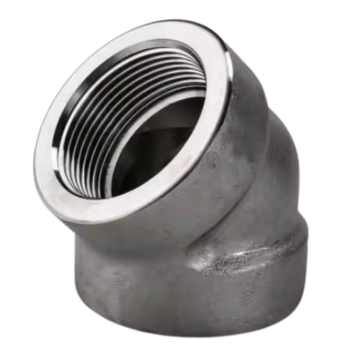
Forged Fittings
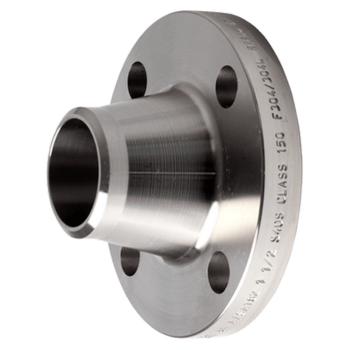
Flanges
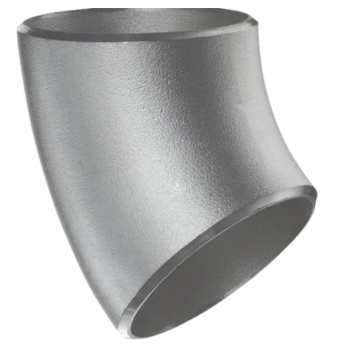
Buttweld Fittings
